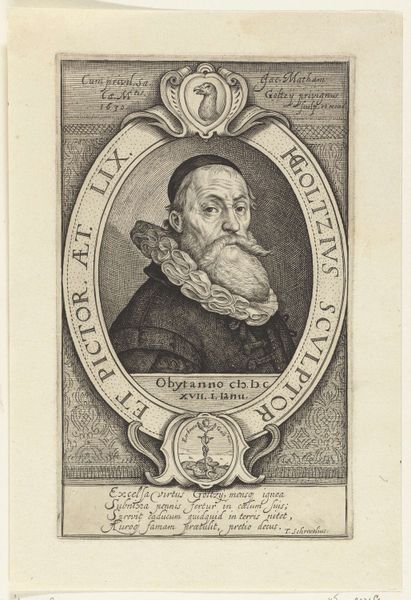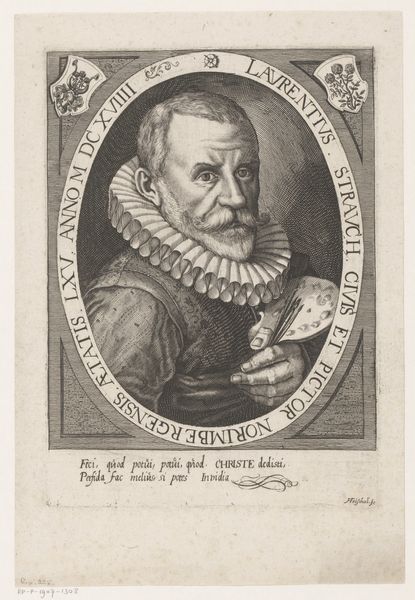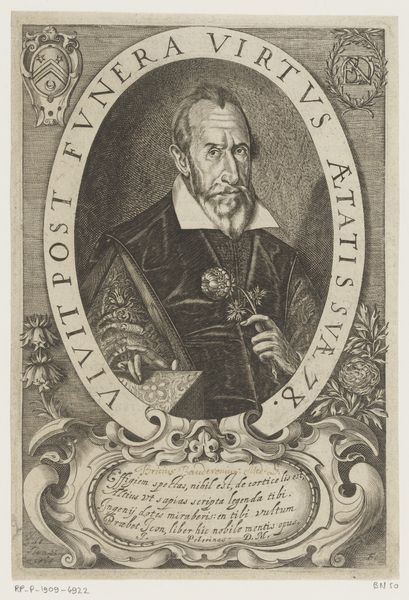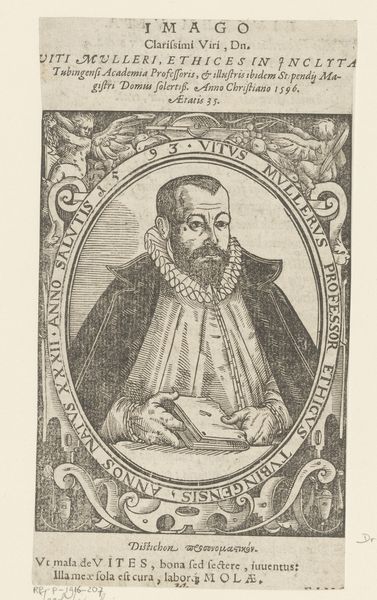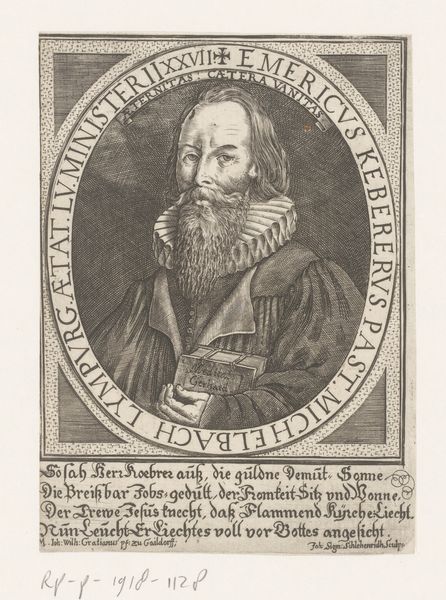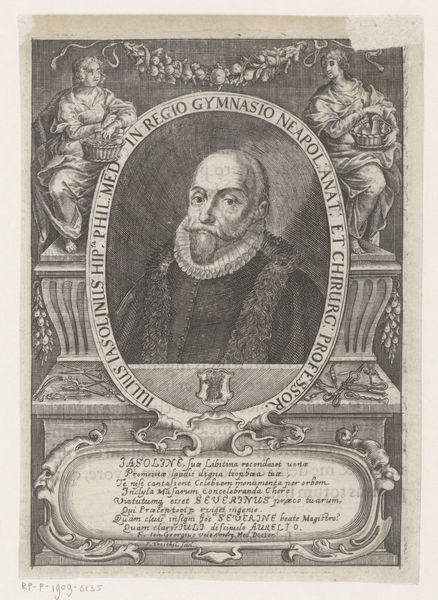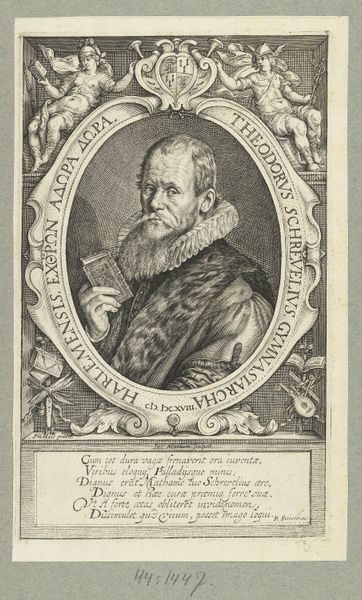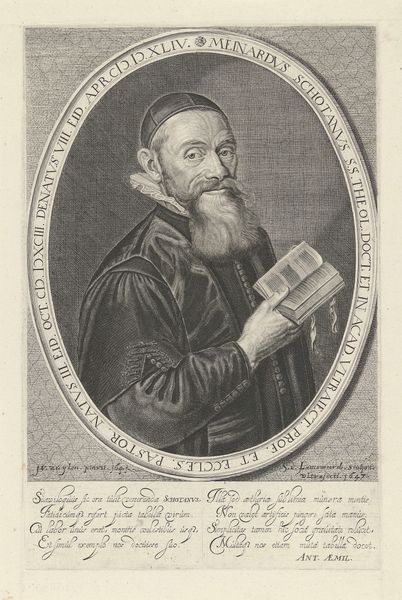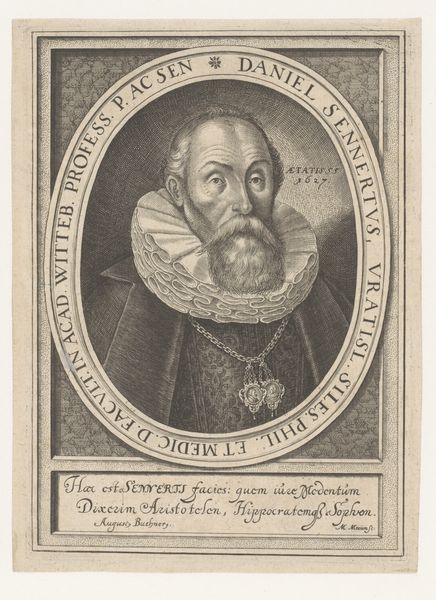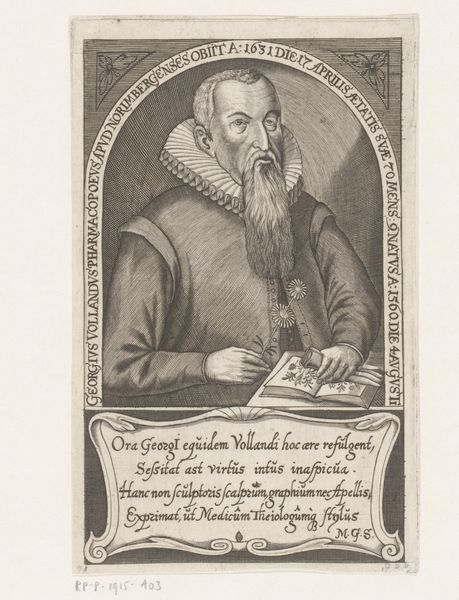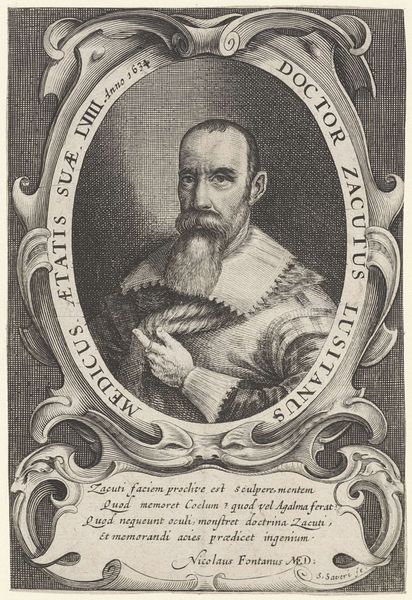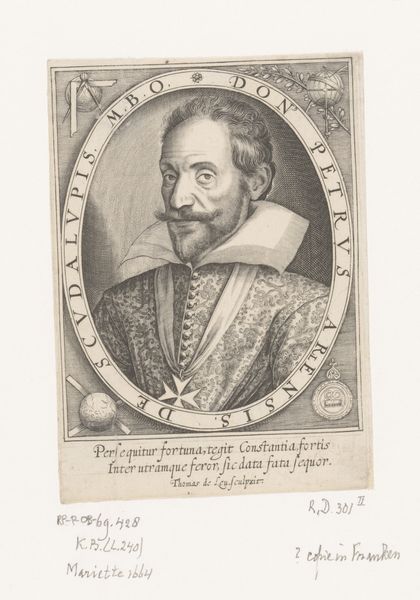
print, engraving
#
portrait
# print
#
old engraving style
#
portrait drawing
#
engraving
Copyright: National Gallery of Art: CC0 1.0
Editor: This is a portrait of Albrecht Altdorfer by Jeremias Falck, rendered as an engraving. It gives me a strong sense of historical distance; its ornate frame almost boxes the subject within his time. How would you interpret this print? Curator: Well, let’s consider the public role of portraiture during this period. Prints like these, widely distributed, played a crucial role in constructing and circulating the image of important figures like Altdorfer. Who controlled this image and what messages were they trying to convey? The setting and frame are part of this construction. The natural details seem idealized rather than faithful. Editor: So you are saying the artist intended a more idealized representation. Why not focus more on pure portraiture then? Curator: Exactly, what’s at play are decisions driven by how he wants to communicate Altdorfer’s identity within a broader cultural and perhaps political landscape. The way Altdorfer is presented would signal what kind of figure he was perceived to be and to whom. What would an audience from that time have been seeing? Editor: It seems almost like early forms of branding or public image management! Curator: Precisely. It prompts us to think about the politics of imagery and how these kinds of printed images can influence perceptions and solidify particular narratives, not just of individuals, but of movements and ideas as well. This makes me consider whether such engravings could reinforce authority, patronage, or affiliation to specific artist collectives. Editor: That's such a fascinating way to think about it – more than just capturing a likeness. Curator: Indeed! And that's often how social and institutional frameworks of any era are made. It certainly gives me a better appreciation of its value!
Comments
No comments
Be the first to comment and join the conversation on the ultimate creative platform.
